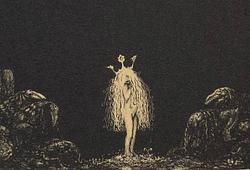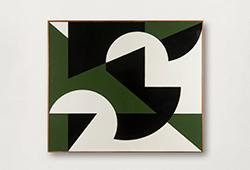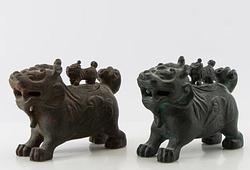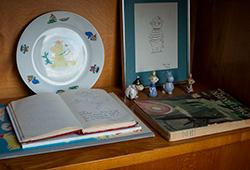Ruth Milles
Girl with a water bucket ("Vattenbärerskan")
Signed Ruth Milles and dated 1906. Foundry mark Herman Bergman Fud. Bronze, dark patina. Height 35 cm.
Kirjallisuus
"Katalog öfver bronser från Herman Bergmans Konstgjuteri AB Stockholm", the model listed and depicted as no. 71, there called "The Farmer's Wife" (Bondhustrun).
Muut tiedot
In the autumn of 1899, Ruth Milles went to Paris where her brother Carl Milles had already been living for a few of years. He rented a studio for her. An inheritance provided Ruth with financial security at the beginning, allowing her to work on sculpture, study drawing at the Académie Colarossi, and attend anatomy lectures at the École des Beaux-Arts. Soon, however, she had to take various jobs as a draughtswoman and illustrator to support herself. Ruth created illustrations for Swedish newspapers, Christmas cards, and other commercial items. The siblings, who now changed their surname to Milles after their father's nickname Mille, were constantly short of money but lived a free life. They made friends from various countries, including two girls from Austria who settled in the same house as Ruth. Their names were Olga and Lintschi Granner, and soon Ruth and Carl Milles were spending a lot of time with the Granner siblings. They had dinners at small restaurants and took long walks to various sights. During the summers, Ruth travelled to Normandy to work.
She solemnly describes in her memoirs the encounter with Paris's artistic treasures, the many museums, monuments, and churches. She writes:
"For us, the Paris of the boulevards, the city of luxury and the grand fashion houses held no attraction; we occasionally went to theatres and vaudevilles, including the Moulin Rouge; but it was primarily the Paris of great beauty that we loved and immersed ourselves in."
Ruth and Carl's finances improved when they, together with a colleague, started a business selling reproductions of statuettes in large editions. Everything went well until the agent they hired deceived them. Despite this, it was still possible for Ruth to support herself during her years in France. Her statuettes featuring women and children in a realistic style were appreciated and relatively easy to sell. It was significant that Ruth received an honourable mention when she exhibited at the Paris Salon for the first time in 1902. The sculpture was titled Le Chaperon Rouge. An honourable mention was a great honour and important for her future career. (Millesgården)














































